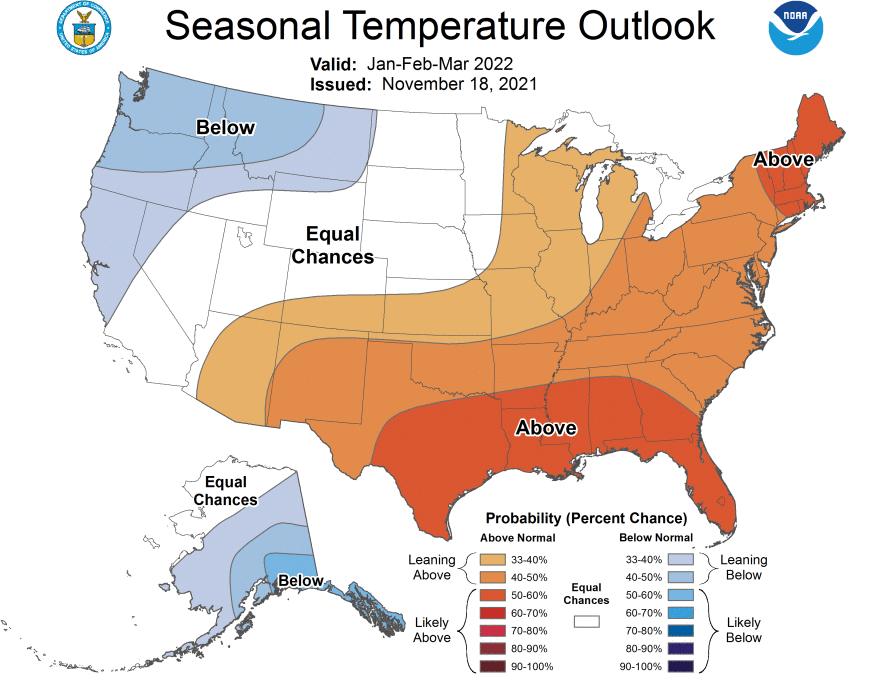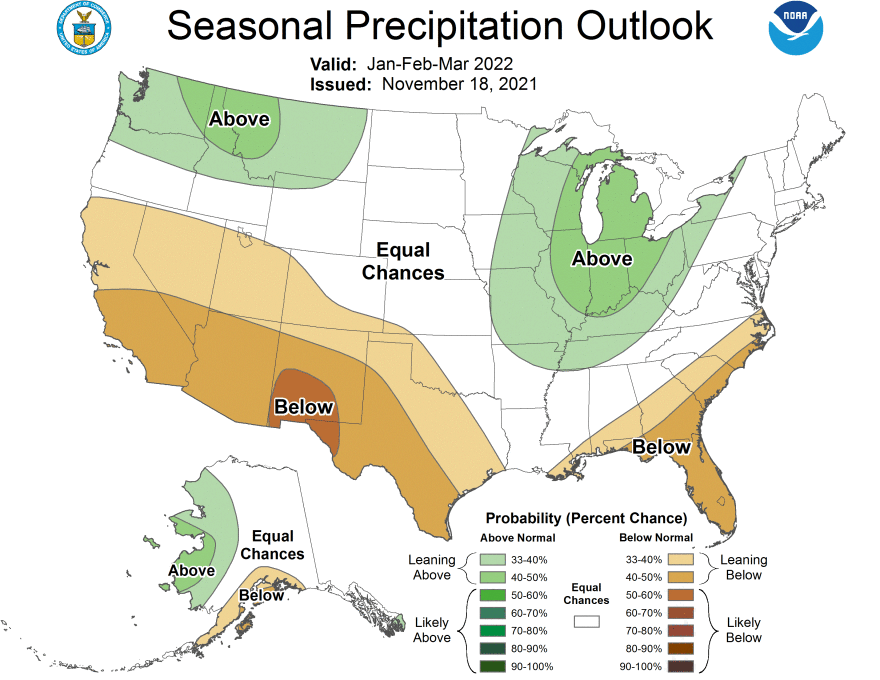La Niña, an occasional pool of cooler water in the southern Pacific Ocean, is the focus of lots of attention in the mainstream press and on social media. But hype, sensationalism and misinterpretation often obscure what the climate phenomenon means for the Pacific Northwest, and what kind of weather the region will experience. Though a La Niña winter often means cooler temperatures and more precipitation in the Northwest, those conditions are not guaranteed.
Meteorologists tend to take a more sober view of La Niña, which includes the limitations of predicting weather over seasonal spans of time.
“We’re looking at a lot of weather models that forecast out months in advance and what they’re showing,” said Laurie Nesbit, a meteorologist with the National Weather Service office in Spokane.
What those computer models show is a 95 percent chance of La Niña in the core winter months of December, January and February. But the presence of La Niña doesn’t tell us what the weather will be like on an everyday basis. Each La Niña period is unique. Sometimes it means more rain and snow. Sometimes it doesn’t. And there’s no way to know for sure until we actually live through the winter and look back on the data, Nesbit said.
“In some winters, we don’t see a lot of snow in December, and it’s not until mid- to late January that we get snow in our valleys…February, even March,” Nesbit said.
Looking at a single day’s weather and proclaiming it to be proof of a La Niña winter would be incorrect, Nesbit said. Determining whether a major storm system was in any way influenced by La Niña can take several months of intensive data analysis, according to the National Oceanic and Atmospheric Administration (NOAA). Attributing a rainy day to La Niña is impossible, the agency said.
Whether or not your town sees a discernible difference in its weather this winter depends on many factors, according to NOAA. Those factors include where you live, La Niña’s strength and duration, and other climate patterns that develop and influence whatever the season may bring.
On a daily level there can be great variation, with mild and dry days mixed in with cool and wet ones.
“Weather is short increments of time. You go outside, it’s sunny. You go outside, it’s cold. You go outside, it’s cloudy. That’s the weather that’s occurring now,” Nesbit said. “La Niña is more of a climatological thing, where we study it for months and years at a time.”

NOAA, the parent organization of the National Weather Service, publishes long-term outlooks online. The outlooks cover periods from as short as ten days in the future to as long as three months. The maps are often misinterpreted among the public as guarantees of certain conditions, such as less rain or warmer temperatures. Instead, they are general guidance based on historical precedent, expressed as mathematical probabilities. Crucially, they are not forecasts and are not meant to be interpreted that way.
The latest outlooks for January, February and March were issued November 18. They show a 40 to 50 percent chance of below-average temperatures in the Inland Northwest compared the 30-year average, and a 40 to 50 percent chance of above-average precipitation.
The long-term outlooks provide some idea of what meteorologists think may happen, compared to averages. But they are not guarantees, and they don’t predict day-to-day weather.
In short, NOAA said, the effects of La Niña (or its warm-water sibling, El Niño), on winter climate in the Pacific Northwest are a matter of probability, not certainty.


